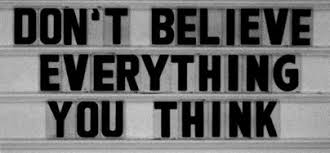
Hey there. It’s your every-other Friday Morning Buzzmaster, Sarah. If I didn’t introduce myself before, here’s a little about me. I am dedicated local government professional, but where my passion really lies is with people and communities, and in particular at the neighborhood level. Local government is one awesome place to exercise that passion, and I love ELGL because it is a network to explore ideas, and seek authentic dialogue and research that leads to improvement. ELGL’s work on women in leadership (#13percent ) and the hard and important conversations about race, are critical for our profession.
Today I want to talk about labeling, and in particular the language we use that create neighborhood stigmas which are often routed in racist stereotypes.
What is neighborhood stigma?
Here are some words I have heard from the media, public administrators, private sector leaders, friends and family to describe neighborhoods that are comprised primarily of people of color: fragile, troubled, depressed, dangerous, poor, challenged, shady, ghetto…the list goes on. Some of the language has landed itself in planning documents, with good intentions, aimed at identifying areas for investment.
I didn’t think much about that language growing up in the white burbs of Philly or living in largely gentrified city neighborhoods in urban areas in my twenties. I probably didn’t challenge those notions because of my own deep-rooted racism. (Yes, I had/have it. We all do.) I just accepted that places and spaces labeled bad, well…were accurate.
So as I strive to use a racial equity lens in my work and life, I have come to the realization that I have been complicit in reinforcing the stereotypes that poor, dangerous or “bad” neighborhoods are synonymous with Black or Brown people. Lynda Laughlin, a family demographer at the U.S. Census Bureau, has pointed out that people use the term “ghetto” based on assumptions: She notes:
… General public use of the term “ghetto” tends to assume such areas characterized by crime, slackers, Chinese take-out restaurants, store front churches, poverty, and racial/ethnic minorities… For many individuals, their image of a “ghetto” is less from actual experience but influenced by the popular media.
Okay. So if neighborhood labels are generalizations based on assumptions, and as humans, we all make assumptions, what do we do?
For one, challenge our own assumptions and pay attention to narratives. Because it doesn’t just feel wrong to label people or parts of town negatively, it’s also straight up detrimental. Just look at the research.
Harvard Sociologist Robert Sampson, in his book Great American City: Chicago and the Enduring Neighborhood Effect found that a neighborhood’s “bad” reputation was a greater predictor of poverty than almost any other variable, including the neighborhoods actual poverty level.
Daniel Hertz from the City Observatory summed it up well:

…Much of the popular understanding of how neighborhood reputation works is backwards. Communities acquire a reputation for being “sketchy” to some extent independently of whether or not that “sketchiness” is real—and in a way that’s heavily influenced by racism. Once they have a bad reputation, however, the stigma helps create the very problems it warns others away from—in part by causing people to avoid the neighborhood.”
Back to my life. I live in North Charlotte, comprised of historically Black communities, and I have the opportunity in my job to do work in the area in which I live. It’s an area with rich history, with neighbors and community leaders who are a lot of things. Those things include, smart, strong, proud, resilient, mentors, vigilant, joyful, resourceful, creative and kind. People who live here are parents, grandparents, government employees, teachers, professors, bankers, entrepreneurs, and home care workers. So is the area “troubled”? No. It’s many things.
That’s not to suggest that local government, nonprofits, and community partners gloss over issues that exist like crime, high pockets of concentrated poverty, nor ignore the structures and systems of disinvestment that persist, but let’s also not paint a single narrative with our language. And let’s recognize that when we do reinforce the negative labels, it has deeply harmful effects on communities. It warns people not familiar with the area to stay away, and it reinforces racist stereotypes. It sends a message to people who live there that they are lesser than.
Our Challenge
I share this to challenge local government leaders to think about how we talk about our communities, in particular communities of color, whether it is officially, like in a planning document, or in conversation with our peers. Ask these questions:
- Who decides on a neighborhood’s label?
- Does the label tell a single story? (Check out Chimamanda Adichie Ted Talk to learn about the danger of a single story)
- Do the people who live there get a say in their narrative and the language that is used?
- How might you better work with residents to provide space for them to tell their own story?
Finally, if you are put in charge of a project in an area unfamiliar to you, be deliberate. Go out and spend some time talking to residents. Ask people about their neighborhood, what they love, about the history, about what is challenging. Ground truth data and challenge assumptions. Actively engage residents in processes early, so as to jointly shape the work that is being done and the story that is being told.
Neighborhood stigmas routed in racism are real. Words have power. We all have a role to play.
